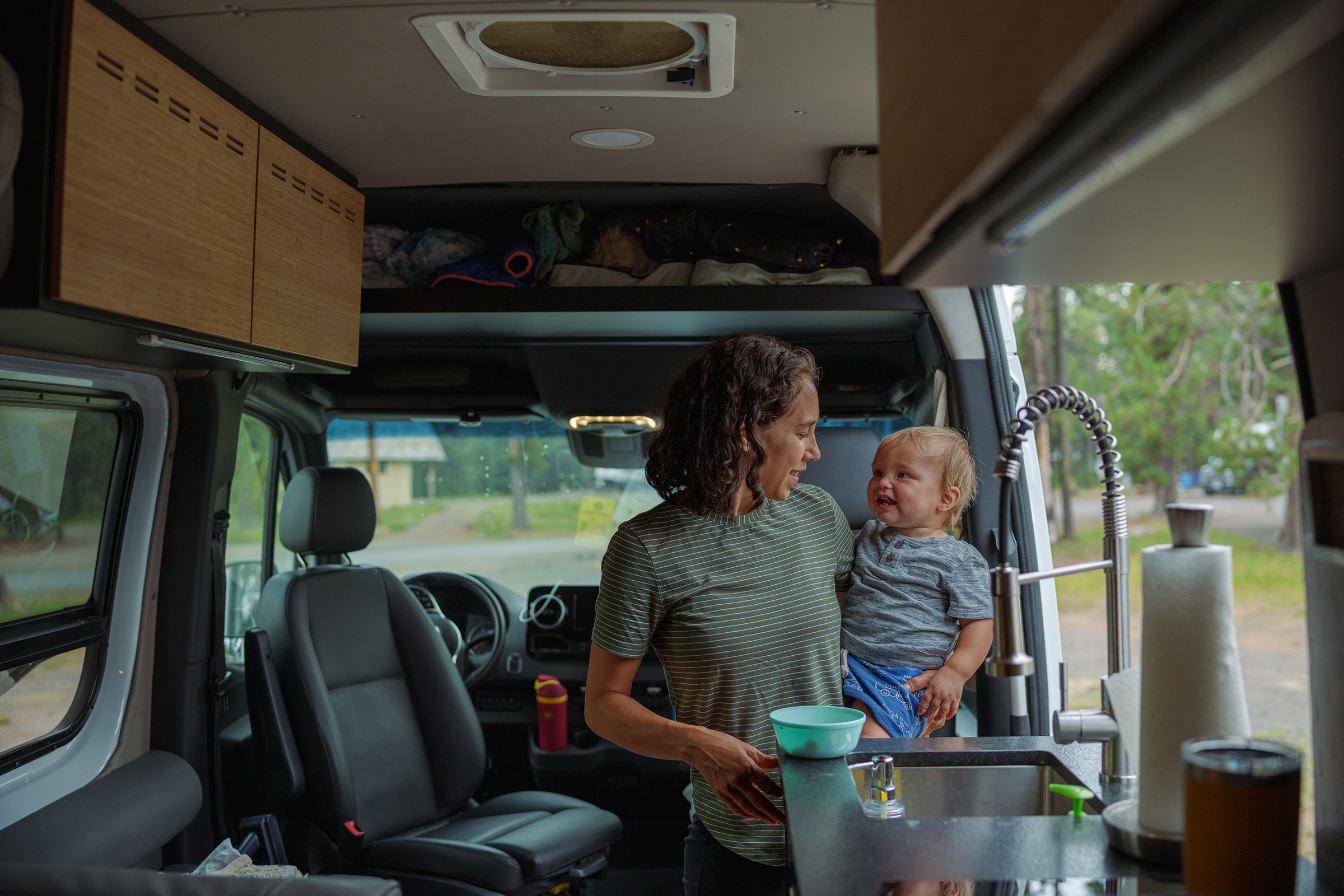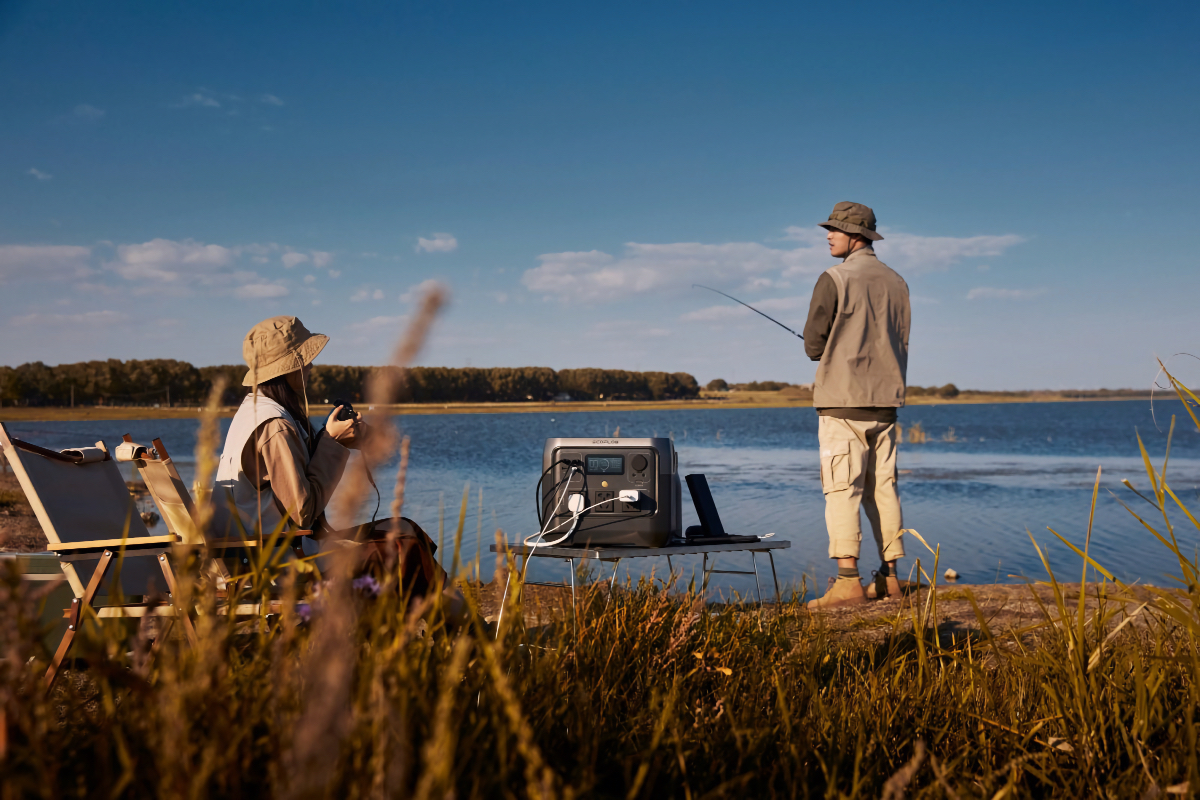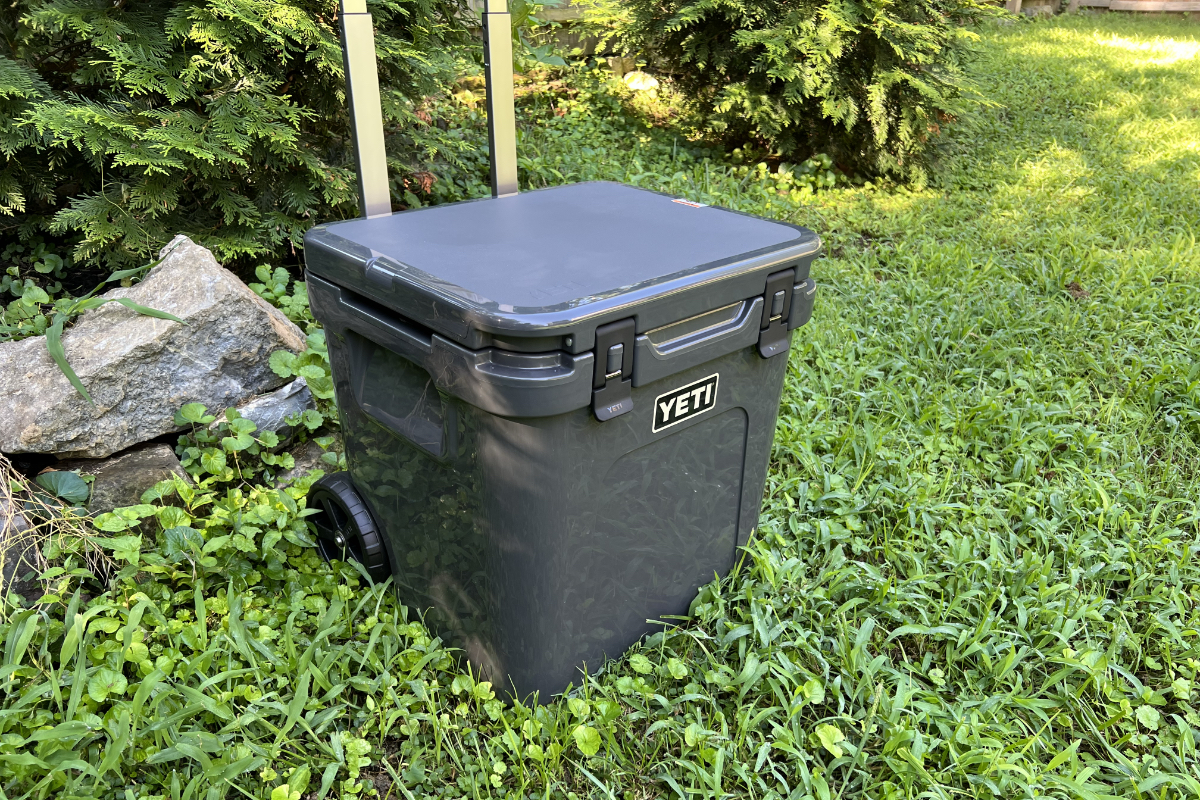Best E-Bikes for RVers
Image Caption: Author Morey Edelman
E-Bikes
If you’re a motorhome enthusiast who likes to do some cycling on your outings, it’s time to check out an electric bicycle (e-bike) for your travels. We discovered that having an e-bike is a great addition to our motorhome adventures. Basically, an e-bike is a bicycle with a lightweight electric motor. The advantages include increasing your range when out biking, being able to climb hills effortlessly, the ability to carry more weight (like when you want to bring back all that great produce from the farmers market), quicker trip times due to faster speeds and, for RVers who have many candles on their birthday cake, an e-bike helps remove some of those candles (metaphorically speaking). Whereas before, riding a bike was good for 5-15 miles, now traveling 25 or more miles is easily done (in fact, it can be a piece of cake). With an e-bike, we can cycle to a trailhead or a store, take that hike or buy those groceries, and then bike back to the campsite without feeling exhausted.
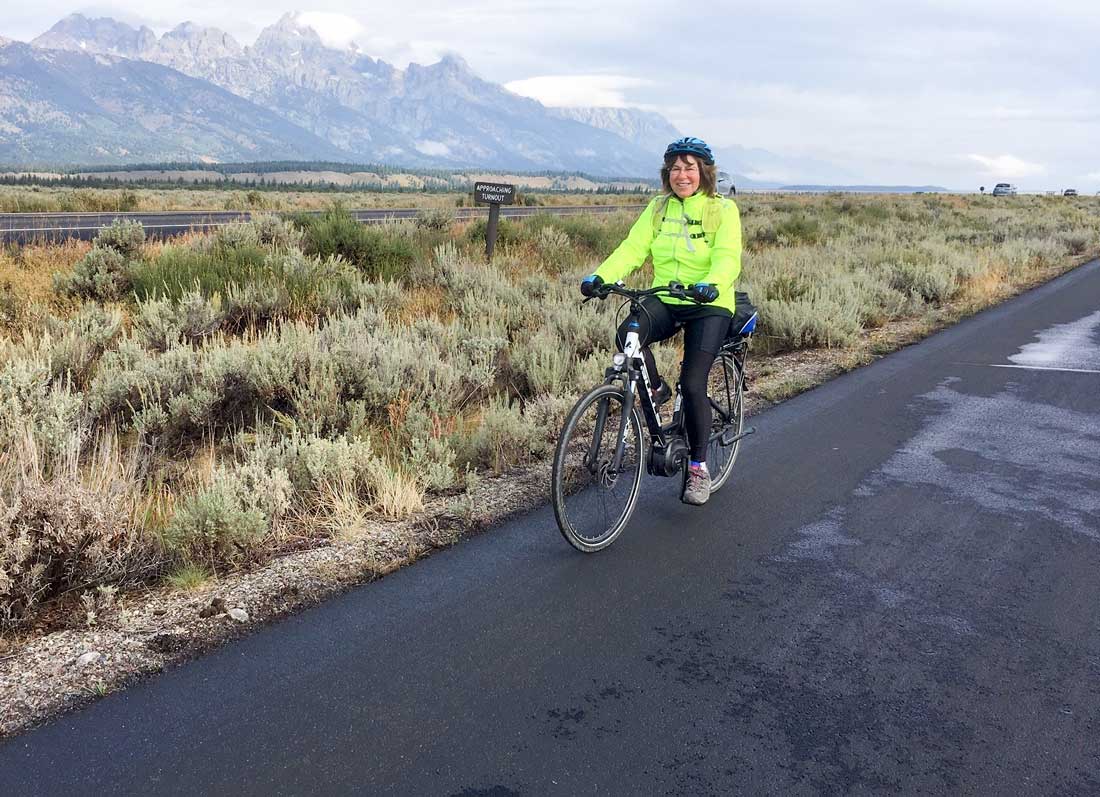
Author Ruth Edelman enjoys a ride on her e-bike with the Teton Mountains in the background.
E-Bike Brands
Just as there are a number of brands and styles to choose from when shopping for a conventional bike, those same choices apply to e-bikes. E-bikes are available in three main styles: commuter style with a step-through frame, hybrid style for pavement and gravel roads, and off-road style with heavier tires and an aggressive suspension system. Since e-bikes are much more popular in Europe, many of the European brands have a more extensive selection.
The popularity of e-bikes in the U.S. and Canada almost doubled in 2018 over the previous year. An e-bike revolution of sorts has started but it is currently only 10% of total bicycle sales. With almost 150 bike manufacturers now offering e-bikes in their product lines, the choices can be mind-boggling. If you can locate a bike shop specializing in e-bikes, that’s your best choice; visit and test ride the many offerings. Otherwise, visit several local bike shops; each will have a few brands and a few models to test. Proper sizing of the bike to your dimensions is as important when purchasing an e-bike as when purchasing a conventional bike. The local bike shop staff should be able to match you to the bike properly.
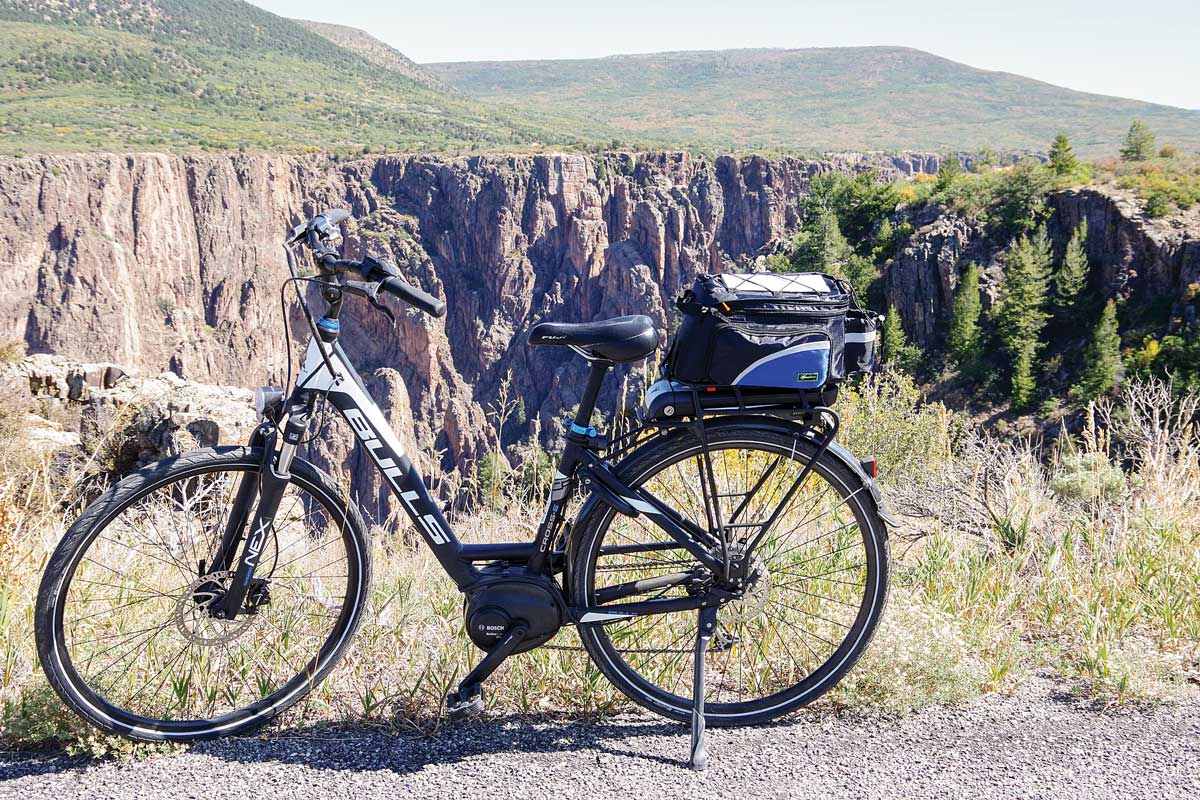
A Bulls Cross E Wave “commuter” step-through frame e-bike works well for author Ruth Edelman.
After months of research, we purchased a Bulls Cross E Wave “commuter” step-through frame e-bike for Ruth and a Yamaha Cross Connect “hybrid” style for Morey. Now, with more than 500 miles on our new bikes, we love them, mainly because they have substantially increased our roaming range from our campsite (we don’t tow a dinghy). We find ourselves chuckling as we pedal-assist up a hill passing bikers half our age, and not getting winded. What a joy to get our e-bikes off the rack and go for a ride!
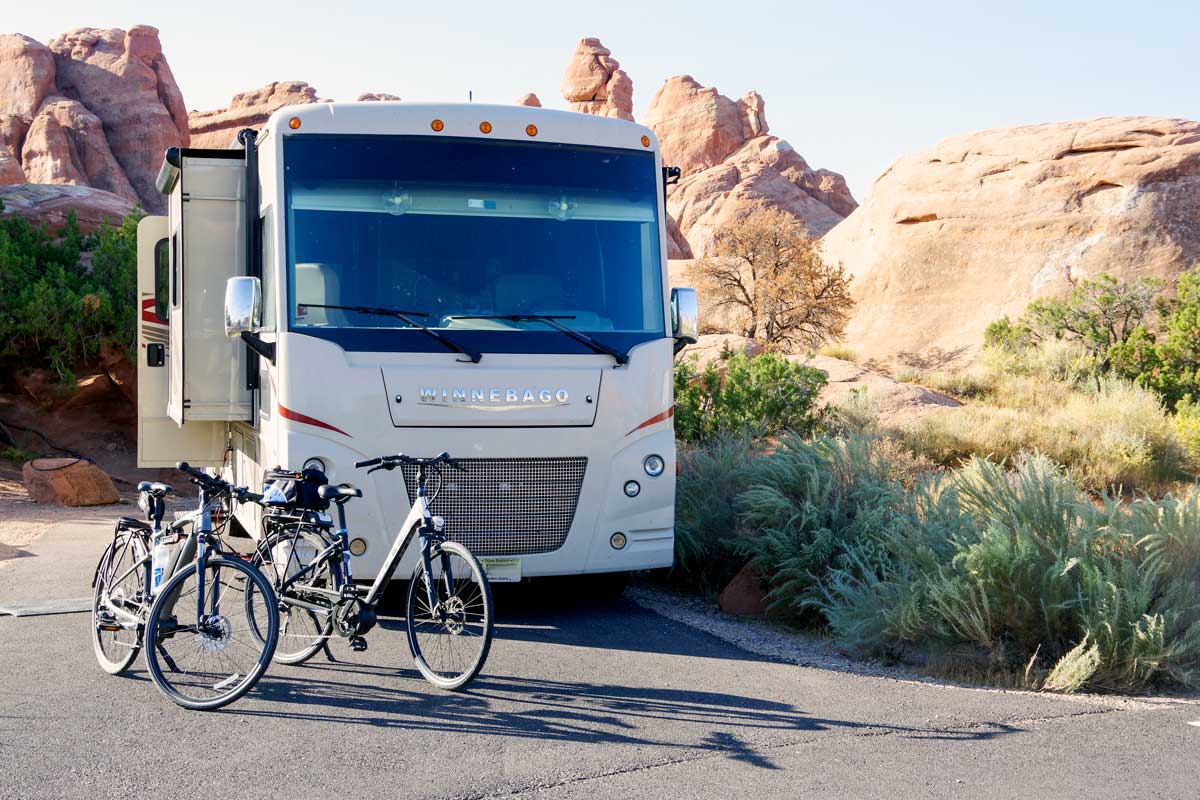
The authors’ e-bikes in front of their Winnebago motorhome.
E-bike Considerations
Pricing:
From less than $1,000 for a kit to add a motor and battery to an existing bike, to more than $5,000 for an off-road bike with full suspension, long-life battery and high-torque motor, there is a wide range of prices. The sweet spot seems to be in the $2,500-$3,500 range; here, most of the better features are available in the e-bike package.
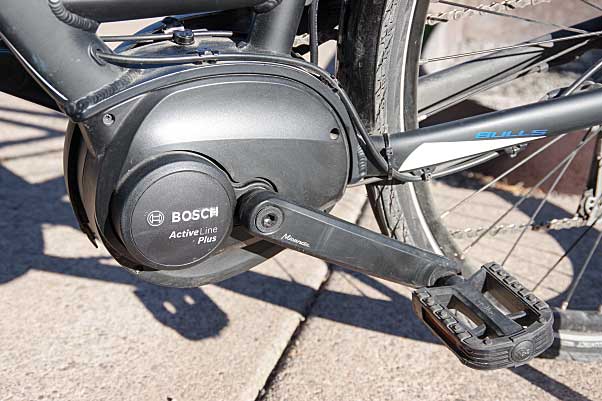
A mid-drive motor offers a more natural riding sensation than a hub-based motor.
Electric Motor
Since the motor is the key component, an understanding and a focus on the motor is essential. Most of the lower priced, sub-$1,500 e-bikes use a “hub” motor. This hub motor is usually on the rear wheel and drives the wheel without the need to pedal. Many of these bikes have throttles that do not depend on the rider pedaling. These bikes are usually heavier and may experience coasting resistance. Note that these bikes generally do not meet the new National Park Service standards (see sidebar) allowing e-bikes, nor many of the recent state regulations managing the use of e-bikes on “non-motorized” cycle trails.
A mid-drive, or center-drive, motor has the motor located on a direct drive to the pedals and is the preferred technology. This offers a more natural riding sensation, a lower center of gravity for more stability and greater efficiency for longer distances. Two major manufacturers that have been at the forefront of design are Bosch and Yamaha. Since these motors can be governed to cut out at the 20-mph limit and are only in operation when the rider pedals, biking with center-drive motors meets the new National Park Service and many state standards.
Battery
As important as the motor, the battery determines the power to help assist the rider. All batteries used are rechargeable, with recharge times of three to five hours. Generally, the higher the wattage, the greater the power and distance that will be available. The minimum recommended wattage is 400 watts, with 500 watts preferred. The battery is a major component of the price of the bike, with an individual price of $500-$800.
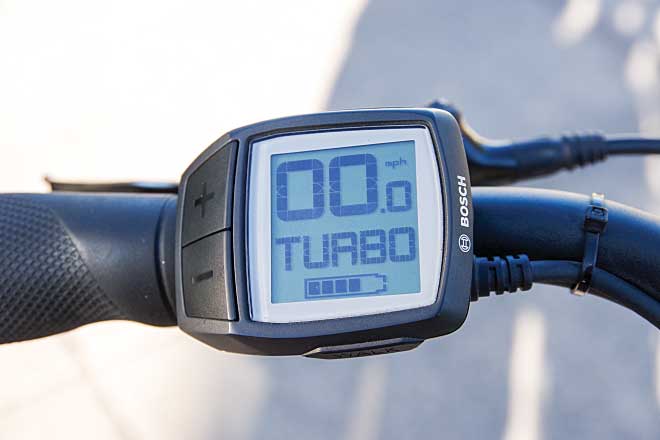
All e-bikes feature a computer that monitors speed, distance, remaining battery life and the battery’s state of charge. The controller allows user input to determine the amount of pedal assistance.
Electronic Controller and Multi-function Computer
All e-bikes have a computer that monitors speed, distance traveled, remaining percentage of battery life and an estimated distance before the battery loses all power. The controller also lets you select from four levels of pedal-power assistance. Different e-bike brands use different nomenclature, but most offer four levels of assist power. The lowest power level offers minimal help (but maximum range). When using the fourth level, you can easily pedal up a hill without breaking a sweat. As you bike, managing your power-assist level with your gear selections can maximize your range and reduce bike fatigue.
Brakes
Since e-bikes are heavier than conventional bikes, brakes are even more important to the package. Hydraulic brakes are better than mechanical disc brakes, which are better than pad brakes. Hydraulic brakes are easier to operate and more reliable, and are highly recommended.
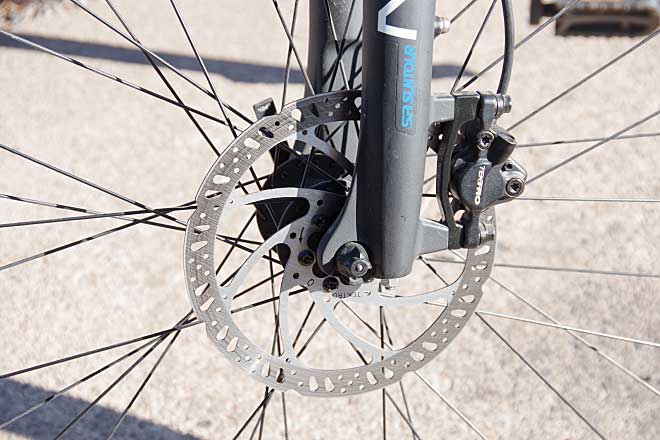
Hydraulic brakes are better than mechanical disc brakes and are easier to operate and more reliable.
Gears
Unlike conventional bikes, which can have 24-30 gear settings, most e-bikes use one gear ring with six to 10 settings. Coordinating the gear selection with the motor setting will maximize power and minimize battery drain.
Tires
Minimum tire sizes offered are generally 35-38 mm, with the majority of the commuter-style e-bikes in the 44-50 mm size. Off-road tires will be larger. Because of the increased weight of e-bikes, using tires designed explicitly for e-bikes is recommended.
Weight
Since the motor and battery can add more than 12 pounds to the e-bike, when shopping, compare weights. The lowest weights start at 45 pounds (versus 25 pounds for conventional bikes) and can go up to 65-70 pounds. Keep in mind that you may be lifting your new bike onto a bike rack on the back of your motorhome, so consider the weight.
Performance (Range)
Manufacturers claim up to a 125-mile range on a fully charged battery. This is based on using the lowest motor-assist choice and biking on flat terrain. We have found that a 70-mile range is the norm for our typical trips.
E-bike Accessories:
Motorhome bike rack: Be sure the rack is approved for e-bikes with specifications to handle a 75-pound bike. The bike tires should rest on the rack, not hang from the frame.
Security: Since you now own a $2,000-plus e-bike, invest in a high-security cable and lock. There are insurance companies that will insure e-bikes.
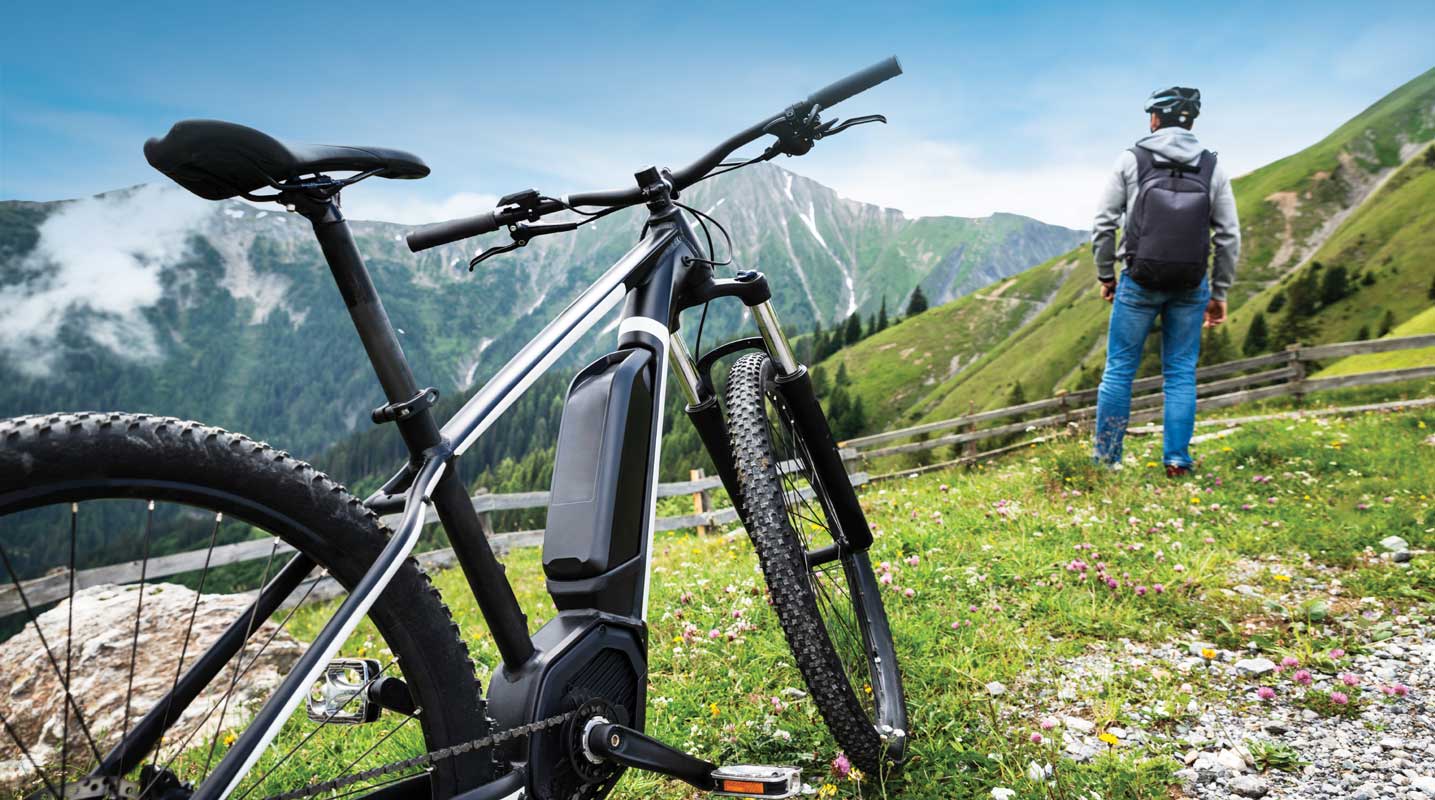
Since e-bikes are much more popular in Europe, many of the European brands have a more extensive selection.

